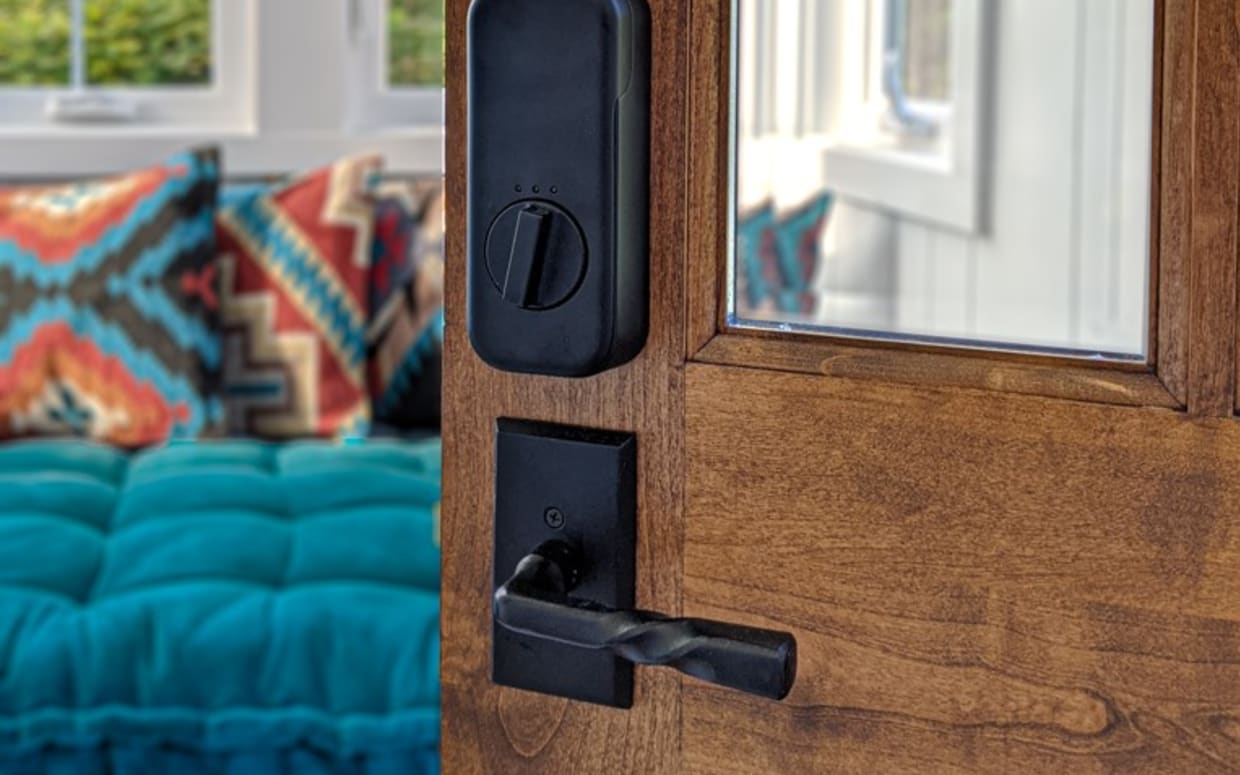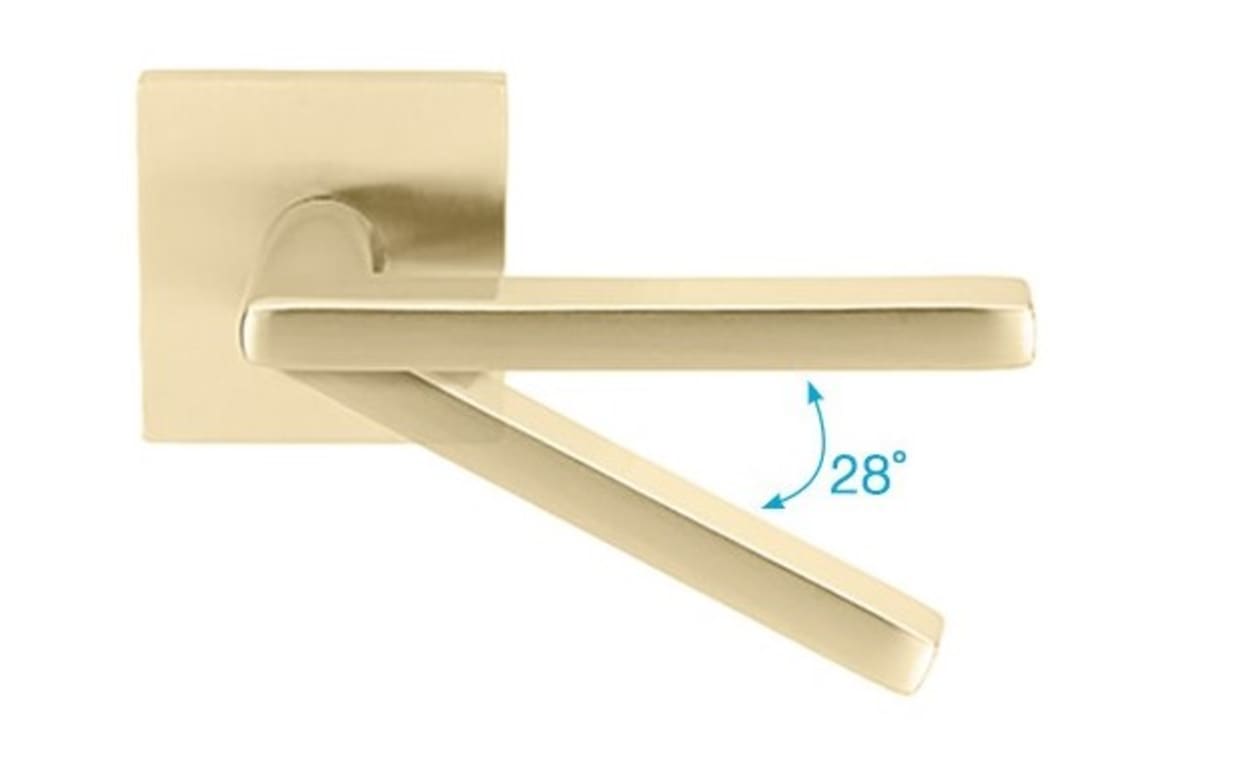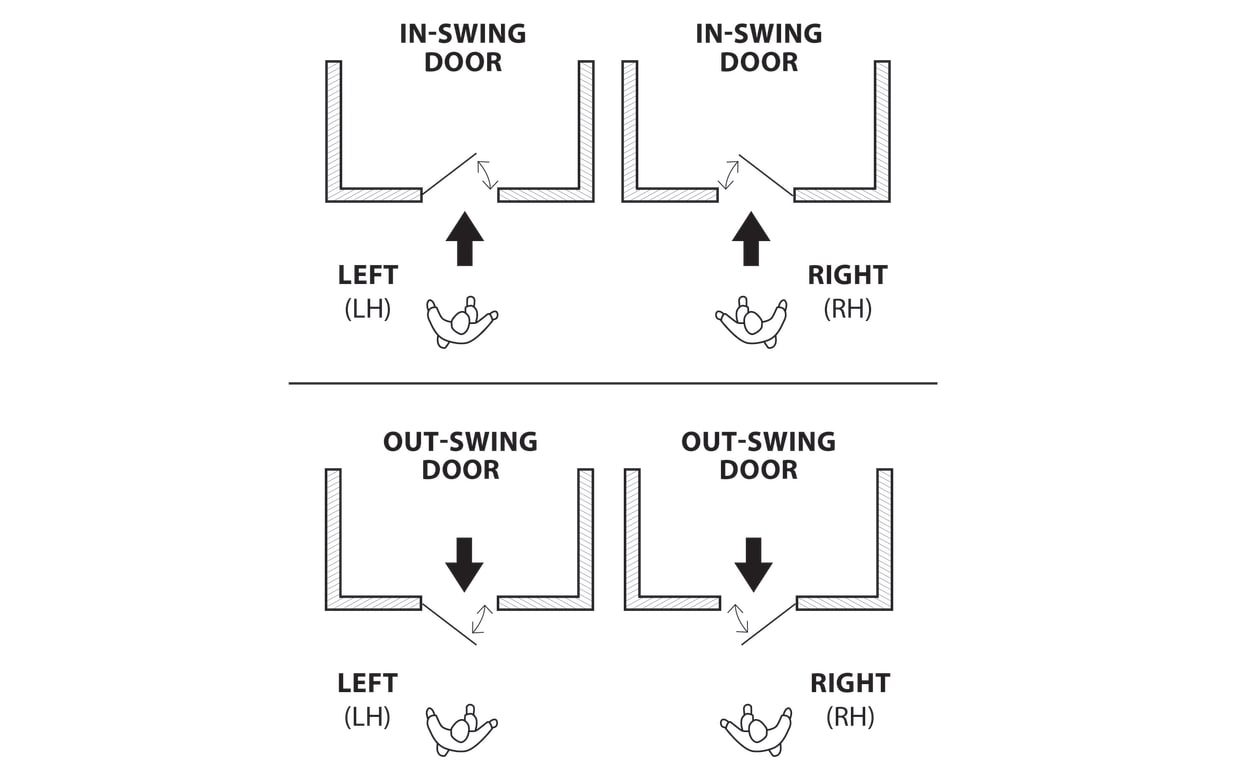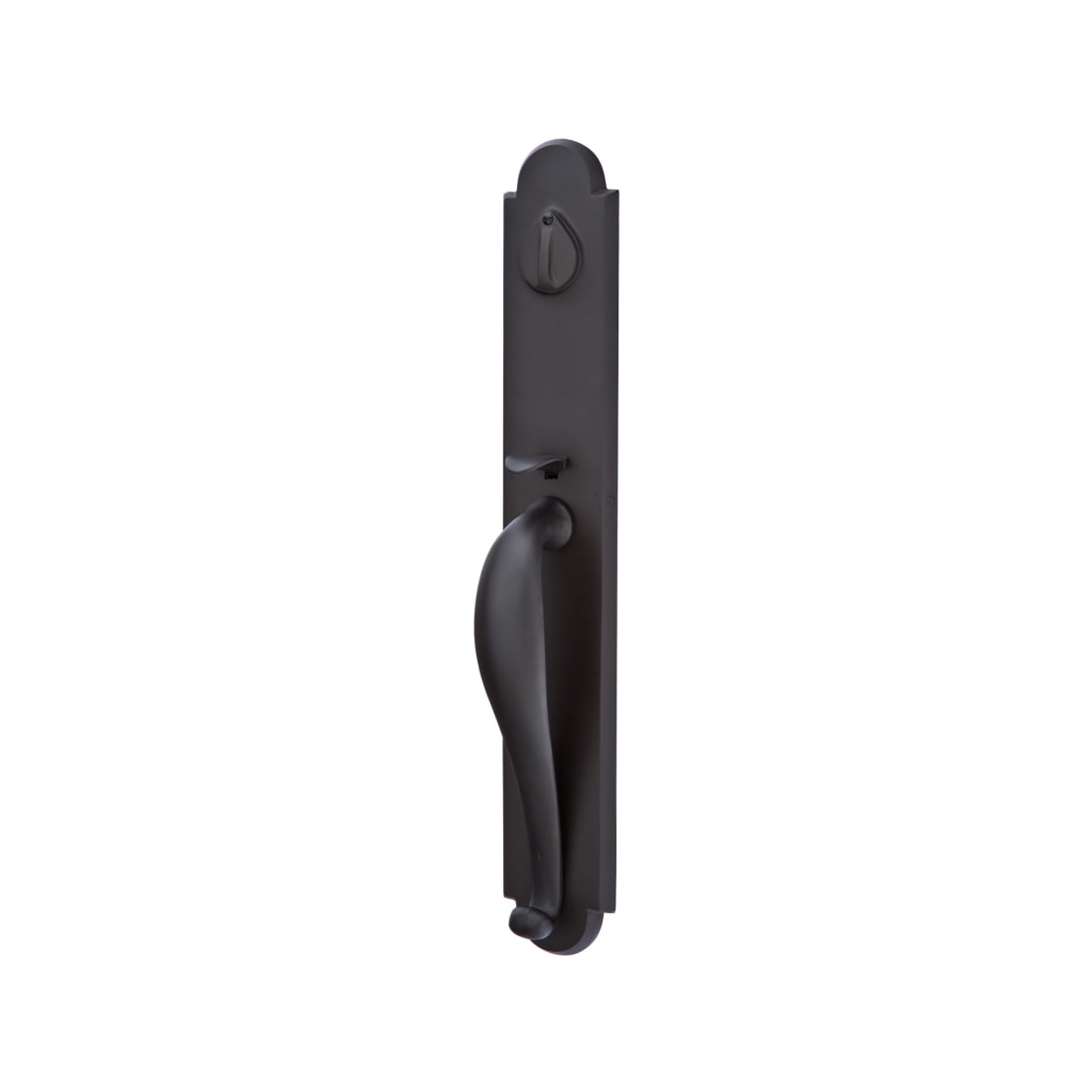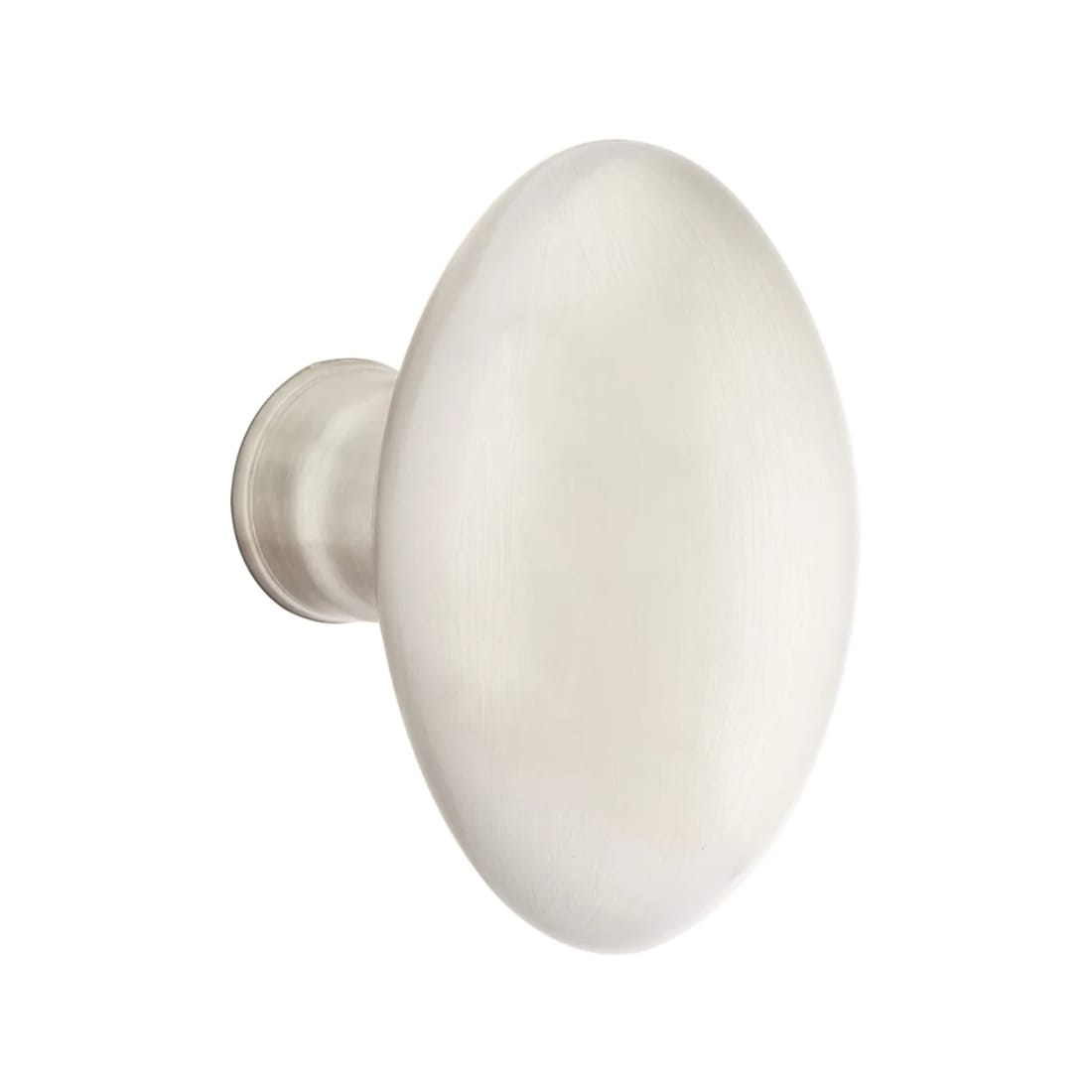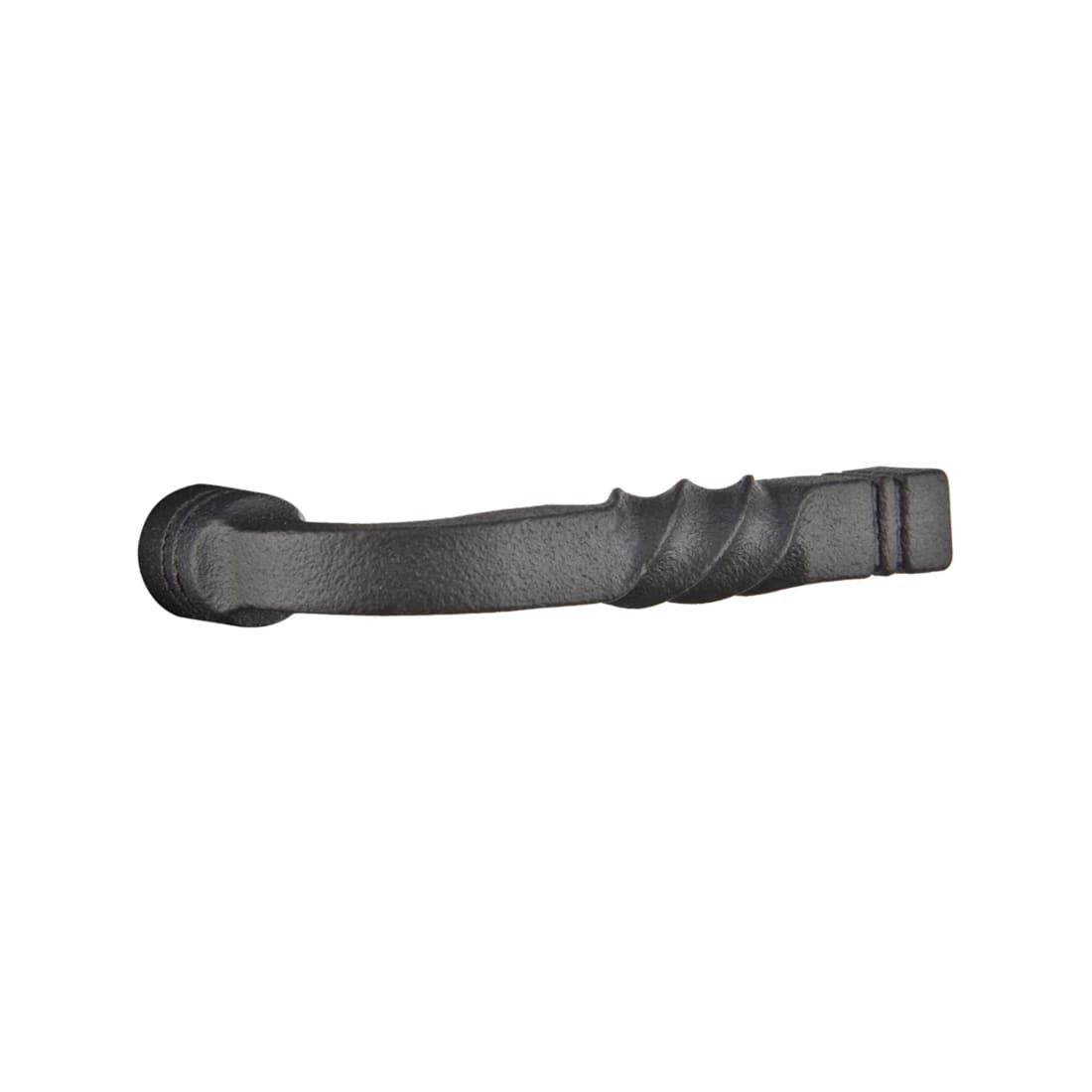
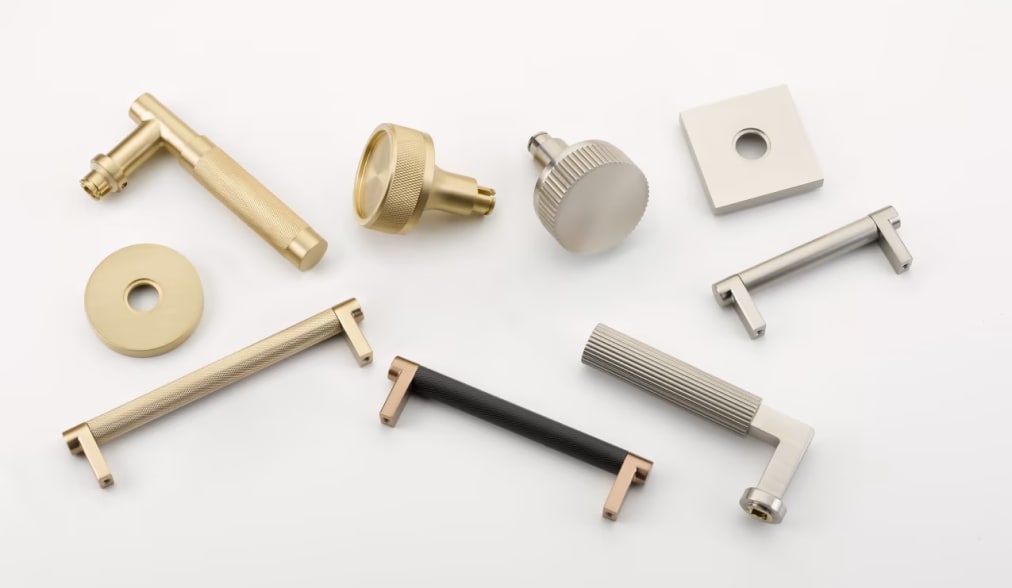
Design your products exactly how you want them with our NEW MyEMTEK tool, and save the details to your Favorites.
Create Now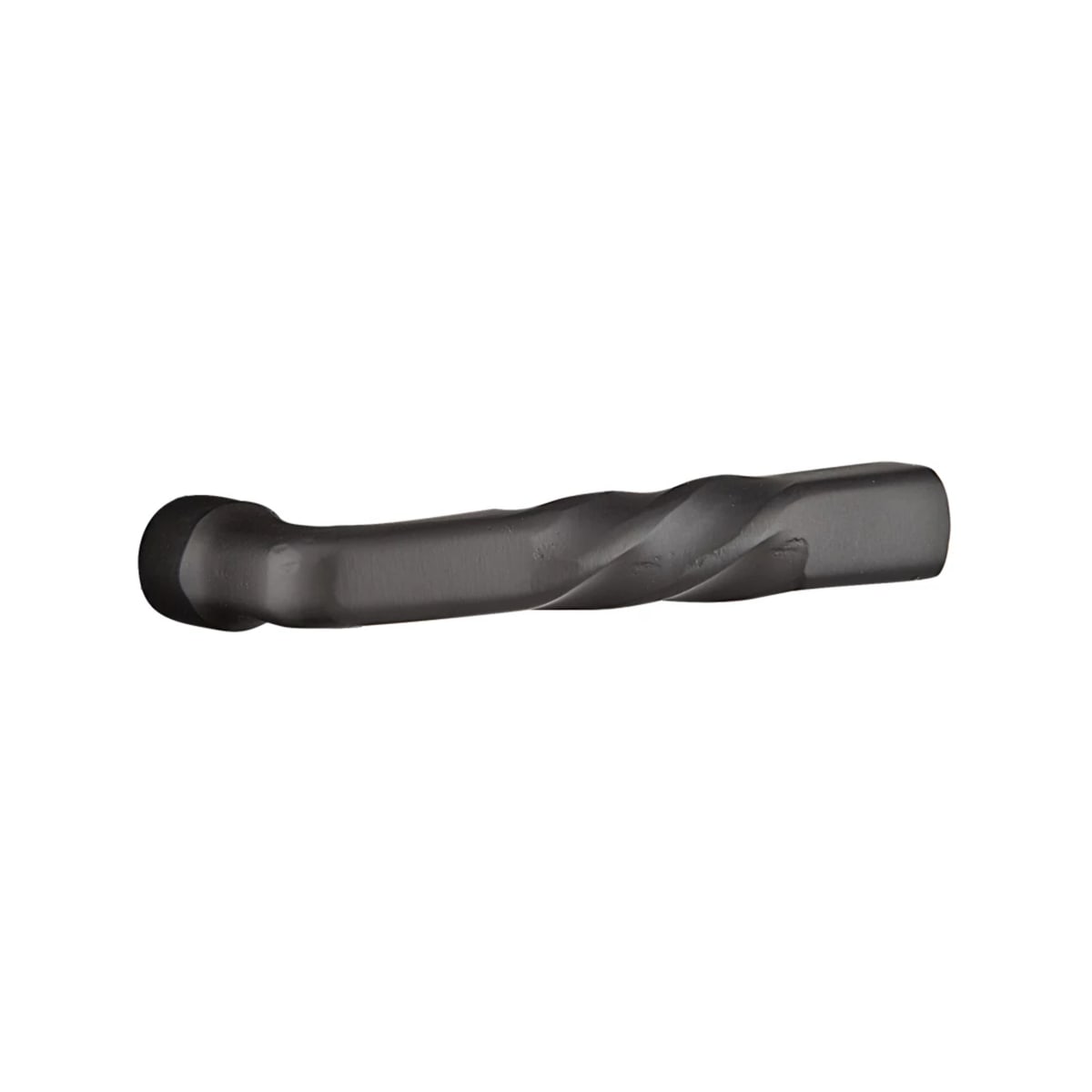
Shown: Emtek Montrose MT FB
Montrose Lever
Customize this product with your perfect style and finish combinations for both sides of your door.
- Can be ordered with any Sandcast Bronze rosette
- Sold as complete set. Includes Latch and Strike Plate
- 28 Degree Latch is available for additional charge
- For pricing information, contact any Emtek® dealer
Available Functions
- Privacy
- Passage
- Dummy
<ul><li>Fits any door between 1-1/4” to 2" thick with a 2-1/8" bore standard door prep*</li>
- Standard latch is for 2-3/8" backset. Specify 2-3/4" backset if required
- Door thickness for Concealed Fastener (CF) is 1-3/8" to 1-3/4". Specify if thicker
</ul>* STRETTO rosette requires a 1-1/4” diameter bore hole and 2-hole door preparation for thumbturn privacy
Specifications
Major Montrose
The Montrose lever is a study in subtle and rustic elegance, distinguished by a small yet captivating rotated detail at the end of the grip. This unassuming design element adds a touch of sophistication to an otherwise understated lever, those who appreciate the beauty in subtle details. The Montrose lever seamlessly combines form and function, showcasing how even a minor rotation can make a significant difference in the overall aesthetic of a space.
Sandcast Bronze
Our collection of Sandcast Bronze knobs, levers and cabinet hardware options are made of a metal alloy that consists mostly of copper and is made to patina over time, creating a "living" finish that showcases exposure and wear patterns for a unique appearance.
The Bronze Age, a historic period between 3300 BC and 1200 BC, was significant for its use of this material.
UPGRADE WITH CONCEALED FASTENER 2.0
Our Concealed Fastener Mechanism provides a clean look with no visible screws on the interior rosette.
All CF Mechanism lever upgrades also include a 28 degree latch (vs the standard 45 degree latch), which requires less rotation to disengage the latch and open a door when compared to standard latches.
RIGHT OR LEFT HANDING?
To determine the handing of your door:
- Stand at the exterior side of the door in question, facing towards the inside.
- Take note of which side of the door the hinges are on.
- If the hinges are on the left side, then the door and the hardware should be left handed.
- If the hinges are on the right side, then the door and the hardware should be right handed.
Learn more about handing here:
RELATED PRODUCTS
{
"id": 379029,
"group": "ProductFamily",
"obj_type": {
"id": 23,
"name": "ProductFamily",
"display_name": "ProductFamily",
"order": 22
},
"primary_image": {
"title": "Emtek Montrose MT FB",
"image": "https://www.emtek.com/media/salsify/images/r8/r8dosf6ezm-2024-02-23T212249Z-Montrose-Lever_EM_KO.jpg",
"asset_type": "IMG_primary"
},
"finish_images": {
"371358": "https://www.emtek.com/media/salsify/images/n3/n32eoh5imj-2024-02-27T180851Z-7058MTMB_EM_KO.jpg",
"371359": "https://www.emtek.com/media/salsify/images/p4/p4oojmmc3z-2024-02-27T180851Z-7058MTFB_EM_KO.jpg",
"371367": "https://www.emtek.com/media/salsify/images/o5/o5ktfggjte-2024-02-27T180851Z-7058MTTWB_EM_KO.jpg"
},
"option": "Montrose Leverset",
"themes": [
{
"id": 371542,
"name": "Rustic Living"
}
],
"merchandising_tag": "",
"pim_id": 427484,
"step_id": "ES_427484",
"code": null,
"is_public": true,
"order": 8741,
"override_image": null,
"product_attribute_id": 476,
"title": "Montrose Leverset",
"images": [
{
"title": "Emtek Montrose MT FB",
"image": "https://www.emtek.com/media/salsify/images/r8/r8dosf6ezm-2024-02-23T212249Z-Montrose-Lever_EM_KO.jpg",
"asset_type": "IMG_primary"
}
],
"description": "<li>Can be ordered with any Sandcast Bronze rosette</li>\n<li>Sold as complete set. Includes Latch and Strike Plate</li>\n<li>28 Degree Latch is available for additional charge</li>\n<li>For pricing information, contact any Emtek® dealer</li>\n",
"technical_specs": "<ul><li>Fits any door between 1-1/4” to 2\" thick with a 2-1/8\" bore standard door prep*</li>\n<li>Standard latch is for 2-3/8\" backset. Specify 2-3/4\" backset if required</li>\n<li>Door thickness for Concealed Fastener (CF) is 1-3/8\" to 1-3/4\". Specify if thicker</li>\n</ul>* STRETTO rosette requires a 1-1/4” diameter bore hole and 2-hole door preparation for thumbturn privacy",
"installation_instructions": [
{
"title": "Passage, Privacy, Dummy - Knob or Lever Installation Guide",
"file": "https://www.emtek.com/media/salsify/images/kj/kjabaos7sj-2024-03-22T233813Z-Aston-Leverset_EM_Instructions.jpg",
"asset_type": "DOC_installationGuide"
},
{
"title": "CF2.0 Passage & Privacy - Knob/Lever Installation Guide",
"file": "https://www.emtek.com/media/salsify/documents/na/najhqn0wus-2024-07-11T215451Z-Aston-Leverset_EM_Instructions3.pdf",
"asset_type": "DOC_installationGuide"
}
],
"templates": [],
"specifications": [
{
"title": "Emtek Rosette Specifications",
"file": "https://www.emtek.com/media/salsify/documents/jn/jnhrmvshda-2024-02-26T193726Z-8Rosette_EM_specs.pdf",
"asset_type": "DOC_productSpecifications"
},
{
"title": "EMTEK Strike Plates for Keyed, Passage, Privacy Specifications",
"file": "https://www.emtek.com/media/salsify/documents/gp/gpl9tkor85-2024-05-23T194414Z-EMTEK_Strike_Plates_for_Keyed_Passage_Privacy_Technical_Specifications.pdf",
"asset_type": "DOC_productSpecifications"
},
{
"title": "EMTEK Passage Privacy Knobsets and Leversets Dimensions/Door Thickness Specifications",
"file": "https://www.emtek.com/media/salsify/documents/yr/yrkbttxqey-2024-09-16T215042Z-EMTEK_Passage_Privacy_Knobsets_and_Leversets_Dimensions_Door_Thickness_Technical_Specifications.pdf",
"asset_type": "DOC_productSpecifications"
}
],
"icons": [],
"functions": [
{
"id": 371413,
"option": "Privacy",
"obj_type": null,
"themes": [],
"group": "Function",
"pim_id": 426148,
"code": null,
"finish_images": null,
"primary_image": {
"title": "pocketdoorlocks_privacy",
"image": "https://www.emtek.com/media/original_images/pocketdoorlocks_privacy.jpg"
},
"merchandising_tag": null,
"function_modal": {
"title": "Privacy",
"image": {
"url": "https://www.emtek.com/media/original_images/Privacy_v3.jpg"
},
"description": "<ul><li data-block-key=\"hzi51\">An handle set with a locking mechanism</li><li data-block-key=\"a5qm8\">Usually in the form of a small push pin lock on the side of the knob or lever</li><li data-block-key=\"2pagm\">To be used with interior locksets only</li></ul><p data-block-key=\"bl6mc\"></p>"
}
},
{
"id": 371412,
"option": "Passage",
"obj_type": null,
"themes": [],
"group": "Function",
"pim_id": 426147,
"code": null,
"finish_images": null,
"primary_image": {
"title": "pocketdoorlocks_passage",
"image": "https://www.emtek.com/media/original_images/pocketdoorlocks_passage.jpg"
},
"merchandising_tag": null,
"function_modal": {
"title": "Passage",
"image": {
"url": "https://www.emtek.com/media/original_images/Passage_v3.jpg"
},
"description": "<ul><li data-block-key=\"utbfj\">A handle set without an internal locking mechanism</li><li data-block-key=\"1oqi5\">To be paired with a deadbolt for an exterior door, or on an interior door that doesn't require privacy<ul><li data-block-key=\"ak3uk\">For example: a walk-in linen closet, kid's room, etc</li></ul></li></ul><p data-block-key=\"7sg28\"></p>"
}
},
{
"id": 371299,
"option": "Dummy",
"obj_type": null,
"themes": [],
"group": "Function",
"pim_id": 426146,
"code": null,
"finish_images": null,
"primary_image": {
"title": "pocketdoorlocks_dummy",
"image": "https://www.emtek.com/media/original_images/pocketdoorlocks_dummy.jpg"
},
"merchandising_tag": null,
"function_modal": {
"title": "Dummy",
"image": {
"url": "https://www.emtek.com/media/original_images/Dummy_v3_R63ifZ7.jpg"
},
"description": "<ul><li data-block-key=\"c6gwo\">Dummy sets have no latch and require no bore hole</li><li data-block-key=\"ch29q\">Surface mounted to the door</li><li data-block-key=\"92k3u\">Often used in conjunction with a passage or privacy set for double or french doors<ul><li data-block-key=\"5jenq\">Acts as a jamb, with a strikeplate for the other door's latch to fit into</li></ul></li></ul>"
}
}
],
"upgrades": [],
"warnings": [],
"finish_ids": [
371367,
371358,
371359
],
"configurator": [
{
"display_name": "Finishes",
"user_interface": "grid",
"options": [
{
"id": 371367,
"option": "Tumbled White Bronze",
"obj_type": null,
"themes": [],
"group": "Finish",
"pim_id": 257454,
"code": "TWB",
"finish_images": null,
"primary_image": {
"title": "Tumbled White Bronze",
"image": "https://www.emtek.com/media/salsify/images/xt/xt8nxm5yal-2024-02-22T124435Z-TWB_EM_finish_2.jpg",
"asset_type": "IMG_primary"
},
"merchandising_tag": null,
"attribute": {
"id": 443,
"name": "Finishes",
"singular_name": "Finish",
"pim_id": 1066
}
},
{
"id": 371358,
"option": "Medium Bronze",
"obj_type": null,
"themes": [],
"group": "Finish",
"pim_id": 257453,
"code": "MB",
"finish_images": null,
"primary_image": {
"title": "Medium Bronze",
"image": "https://www.emtek.com/media/salsify/images/wl/wlspycvlju-2024-02-22T124435Z-MB_EM_finish_2.jpg",
"asset_type": "IMG_primary"
},
"merchandising_tag": null,
"attribute": {
"id": 443,
"name": "Finishes",
"singular_name": "Finish",
"pim_id": 1066
}
},
{
"id": 371359,
"option": "Flat Black Bronze",
"obj_type": null,
"themes": [],
"group": "Finish",
"pim_id": 257457,
"code": "FB",
"finish_images": null,
"primary_image": {
"title": "Flat Black Bronze",
"image": "https://www.emtek.com/media/salsify/images/om/omuf5yknfm-2024-02-22T124435Z-FB_EM_finish_2.jpg",
"asset_type": "IMG_primary"
},
"merchandising_tag": null,
"attribute": {
"id": 443,
"name": "Finishes",
"singular_name": "Finish",
"pim_id": 1066
}
}
]
},
{
"display_name": "Rose",
"user_interface": "grid",
"options": [
{
"id": 371428,
"option": "#4 Rosette",
"obj_type": {
"id": 19,
"name": "Rose",
"display_name": "Rose",
"order": 17
},
"themes": [
{
"id": 371542,
"name": "Rustic Living"
}
],
"group": "Trim",
"pim_id": 397699,
"code": "",
"finish_images": {
"371358": "https://www.emtek.com/media/salsify/images/8x/8xjoqylbdx-2024-02-26T201848Z-No-4-Rosette-MB_EM_KO.jpg",
"371359": "https://www.emtek.com/media/salsify/images/tf/tfwpetvkpm-2024-02-22T163134Z-No-4-Rosette_EM_KO.jpg",
"371367": "https://www.emtek.com/media/salsify/images/fk/fk30nuersb-2024-02-26T201848Z-No-4-Rosette-TWB_EM_KO.jpg"
},
"primary_image": {
"title": "Emtek #4 Rosette Flat Black Bronze FB",
"image": "https://www.emtek.com/media/salsify/images/tf/tfwpetvkpm-2024-02-22T163134Z-No-4-Rosette_EM_KO.jpg",
"asset_type": "IMG_primary"
},
"merchandising_tag": null,
"attribute": {
"id": 453,
"name": "Rose",
"singular_name": "Rosette",
"pim_id": 1196
}
},
{
"id": 371444,
"option": "#6 Rosette",
"obj_type": {
"id": 19,
"name": "Rose",
"display_name": "Rose",
"order": 17
},
"themes": [
{
"id": 371542,
"name": "Rustic Living"
}
],
"group": "Trim",
"pim_id": 397700,
"code": "",
"finish_images": {
"371358": "https://www.emtek.com/media/salsify/images/ji/jipjqiwuqi-2024-02-22T163134Z-No-6-Rosette_EM_KO.jpg",
"371359": "https://www.emtek.com/media/salsify/images/r4/r40awn2jdk-2024-02-26T201848Z-No-6-Rosette-FB_EM_KO.jpg",
"371367": "https://www.emtek.com/media/salsify/images/gr/grqmiihk7o-2024-02-26T201848Z-No-6-Rosette-TWB_EM_KO.jpg"
},
"primary_image": {
"title": "Emtek #6 Rosette Medium Bronze MB",
"image": "https://www.emtek.com/media/salsify/images/ji/jipjqiwuqi-2024-02-22T163134Z-No-6-Rosette_EM_KO.jpg",
"asset_type": "IMG_primary"
},
"merchandising_tag": null,
"attribute": {
"id": 453,
"name": "Rose",
"singular_name": "Rosette",
"pim_id": 1196
}
},
{
"id": 371426,
"option": "#2 Rosette",
"obj_type": {
"id": 19,
"name": "Rose",
"display_name": "Rose",
"order": 17
},
"themes": [
{
"id": 371542,
"name": "Rustic Living"
}
],
"group": "Trim",
"pim_id": 397697,
"code": "",
"finish_images": {
"371358": "https://www.emtek.com/media/salsify/images/yh/yhg9a5ygxy-2024-02-22T163134Z-No-2-Rosette_EM_KO.jpg",
"371359": "https://www.emtek.com/media/salsify/images/ds/dswhcuotif-2024-02-26T201848Z-No-2-Rosette-FB_EM_KO.jpg",
"371367": "https://www.emtek.com/media/salsify/images/u5/u5kqtrjmqv-2024-02-26T201848Z-No-2-Rosette-TWB_EM_KO.jpg"
},
"primary_image": {
"title": "Emtek Sandcast Bronze #2 Rosette MB",
"image": "https://www.emtek.com/media/salsify/images/yh/yhg9a5ygxy-2024-02-22T163134Z-No-2-Rosette_EM_KO.jpg",
"asset_type": "IMG_primary"
},
"merchandising_tag": null,
"attribute": {
"id": 453,
"name": "Rose",
"singular_name": "Rosette",
"pim_id": 1196
}
},
{
"id": 371425,
"option": "#1 Rosette",
"obj_type": {
"id": 19,
"name": "Rose",
"display_name": "Rose",
"order": 17
},
"themes": [
{
"id": 371542,
"name": "Rustic Living"
}
],
"group": "Trim",
"pim_id": 397696,
"code": "",
"finish_images": {
"371358": "https://www.emtek.com/media/salsify/images/ik/ikifnv4tp9-2024-02-26T201848Z-No-1-Rosette-MB_EM_KO.jpg",
"371359": "https://www.emtek.com/media/salsify/images/au/augvn6ymv5-2024-02-22T163134Z-No-1-Rosette_EM_KO.jpg",
"371367": "https://www.emtek.com/media/salsify/images/sw/swx5emhr70-2024-02-26T201848Z-No-1-Rosette-TWB_EM_KO.jpg"
},
"primary_image": {
"title": "Emtek #1 Rosette Flat Black Bronze FB",
"image": "https://www.emtek.com/media/salsify/images/au/augvn6ymv5-2024-02-22T163134Z-No-1-Rosette_EM_KO.jpg",
"asset_type": "IMG_primary"
},
"merchandising_tag": null,
"attribute": {
"id": 453,
"name": "Rose",
"singular_name": "Rosette",
"pim_id": 1196
}
},
{
"id": 371427,
"option": "#3 Rosette",
"obj_type": {
"id": 19,
"name": "Rose",
"display_name": "Rose",
"order": 17
},
"themes": [
{
"id": 371542,
"name": "Rustic Living"
}
],
"group": "Trim",
"pim_id": 397698,
"code": "",
"finish_images": {
"371358": "https://www.emtek.com/media/salsify/images/e8/e8ysozfhzd-2024-02-22T163134Z-No-3-Rosette_EM_KO.jpg",
"371359": "https://www.emtek.com/media/salsify/images/h8/h8mhlj5ihj-2024-02-26T201848Z-No-3-Rosette-FB_EM_KO.jpg",
"371367": "https://www.emtek.com/media/salsify/images/hw/hwxb5txpgy-2024-02-26T201848Z-No-3-Rosette-TWB_EM_KO.jpg"
},
"primary_image": {
"title": "Emtek #3 Rosette Medium Bronze MB",
"image": "https://www.emtek.com/media/salsify/images/e8/e8ysozfhzd-2024-02-22T163134Z-No-3-Rosette_EM_KO.jpg",
"asset_type": "IMG_primary"
},
"merchandising_tag": null,
"attribute": {
"id": 453,
"name": "Rose",
"singular_name": "Rosette",
"pim_id": 1196
}
}
]
},
{
"display_name": "Functions",
"user_interface": null,
"options": [
{
"id": 371413,
"option": "Privacy",
"obj_type": null,
"themes": [],
"group": "Function",
"pim_id": 426148,
"code": null,
"finish_images": null,
"primary_image": {
"title": "pocketdoorlocks_privacy",
"image": "https://www.emtek.com/media/original_images/pocketdoorlocks_privacy.jpg"
},
"merchandising_tag": null,
"attribute": {
"id": 445,
"name": "Functions",
"singular_name": "Function",
"pim_id": 1029
}
},
{
"id": 371412,
"option": "Passage",
"obj_type": null,
"themes": [],
"group": "Function",
"pim_id": 426147,
"code": null,
"finish_images": null,
"primary_image": {
"title": "pocketdoorlocks_passage",
"image": "https://www.emtek.com/media/original_images/pocketdoorlocks_passage.jpg"
},
"merchandising_tag": null,
"attribute": {
"id": 445,
"name": "Functions",
"singular_name": "Function",
"pim_id": 1029
}
},
{
"id": 371299,
"option": "Dummy",
"obj_type": null,
"themes": [],
"group": "Function",
"pim_id": 426146,
"code": null,
"finish_images": null,
"primary_image": {
"title": "pocketdoorlocks_dummy",
"image": "https://www.emtek.com/media/original_images/pocketdoorlocks_dummy.jpg"
},
"merchandising_tag": null,
"attribute": {
"id": 445,
"name": "Functions",
"singular_name": "Function",
"pim_id": 1029
}
}
]
}
]
}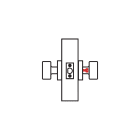 Privacy
Privacy Passage
Passage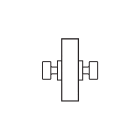 Dummy
Dummy